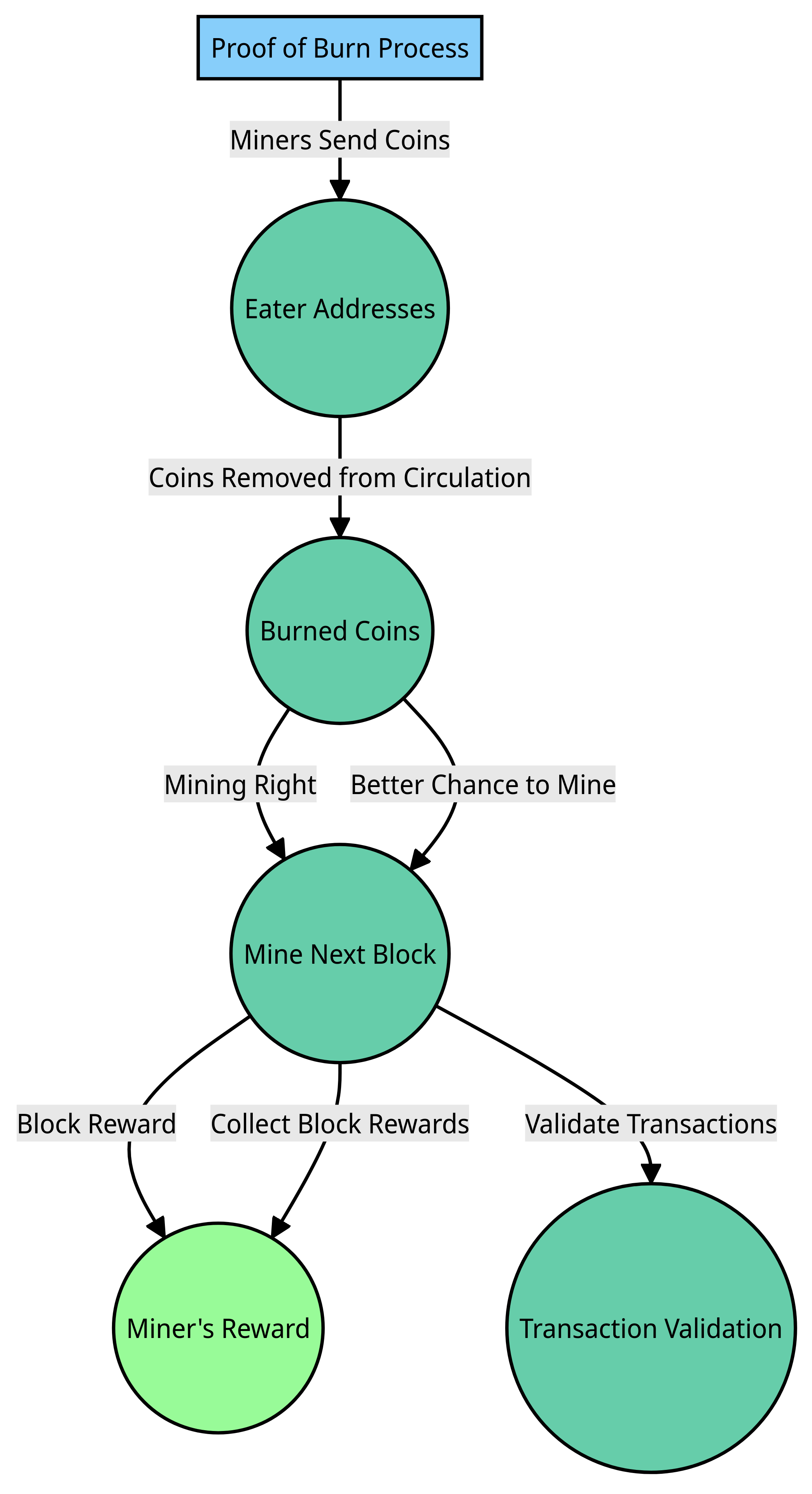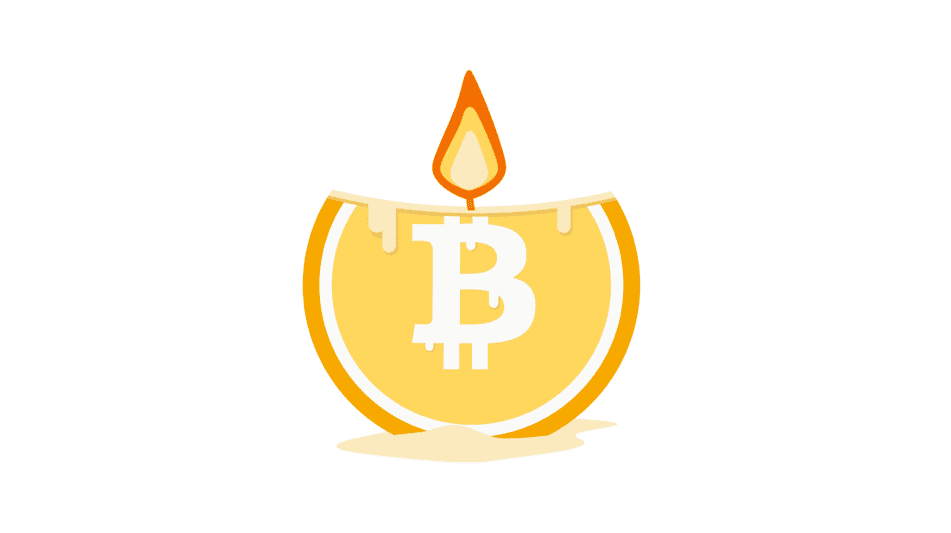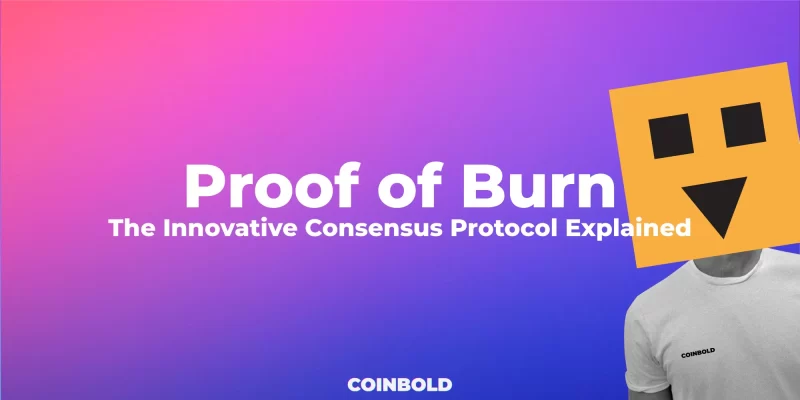Proof-of-Burn Explained – A Novel Way to Reach Consensus on Blockchains
Proof of burn (PoB) is an innovative consensus algorithm used by some cryptocurrencies and blockchains as an alternative to proof of work and proof of stake. In proof of burn, miners prove their commitment to the network by “burning” coins – sending them to specialized addresses where they can never be spent. This virtual process of burning coins allows miners to buy the right to write blocks on the blockchain.
Proof of burn offers some unique advantages over other consensus models like proof of work. For one, it eliminates the high energy consumption and hardware requirements of PoW mining. It also provides a fairer system of distributed consensus than proof of stake.
Let’s dive deeper into understanding proof of burn and how it powers blockchain networks.
How Does Proof of Burn Work? An Overview of the Consensus Mechanism
The proof of burn consensus algorithm relies on miners burning their own coins to get the ability to mine new blocks.

Here’s a quick rundown of how it works:
- Miners send coins to unspendable “eater addresses“, removing them from circulation. This is analogous to burning them.
- Burning those coins gives miners the right to mine the next block proportionate to the number of coins burnt.
- The more coins a miner burns, the better their chance of mining the next block and collecting the reward.
- Over a longer period, miners who burn more coins get to validate more transactions and receive more block rewards.
- Just like proof of work, proof of burn is a verifiable process. All users can check that coins were sent to eater addresses.
- Burnt coins represent a miner’s investment and commitment to the network, similar to buying expensive mining equipment in POW.
So in a sense, coins in PoB act like virtual mining rigs. Burning coins buys you the power to mine blocks on the blockchain. The process is provably scarce and randomized like proof of work, while also lower in electricity usage.
Advantages and Disadvantages of Using PoB for Blockchain Consensus
Advantages of Proof of Burn
Proof of burn offers some key benefits that make it an intriguing alternative to existing consensus protocols like proof of work and proof of stake:
- Low Energy Use – Since no computational work is done, PoB doesn’t require massive computing power and electricity like PoW. This makes it more sustainable.
- Less Hardware Dependence – No special ASIC miners are needed. Commodity hardware is sufficient, so small miners can participate.
- Enhanced Decentralization – The low resource requirements allow more network nodes and greater decentralization.
- Fair Distribution – Coins don’t have to be pre-mined. Anyone can acquire coins and participate in block production.
- Increased Security – PoB prevents centralization of mining power which improves network security.
- ASIC Resistance – Commodity hardware can be used, making the process resistant to ASICs and centralization.
Potential Drawbacks and Challenges with Proof of Burn
Of course, PoB also comes with some disadvantages to consider:
- Coin Burning – Permanently burning coins could result in shrinking circulating supply over time.
- Nothing at Stake – No special hardware investments are made, which reduces the cost of attacking the network.
- Blockchain Bloat – The UTXO set could get bloated with burnt outputs over time.
- Locked Value – Burnt coins are non-recoverable, so there is less liquidity and locked value.
- Centralization Risks – Users with more coins could burn more and centralize mining capacity.
Comparison of Proof of Burn (PoB) vs. Proof of Work (PoW), Proof of Stake (PoS)
| Feature | Proof of Burn (PoB) | Proof of Work (PoW) | Proof of Stake (PoS) |
|---|---|---|---|
| How it works | Nodes burn their tokens to create new blocks | Nodes use computing power to solve mathematical puzzles | Nodes use their tokens to create new blocks |
| Resource requirements | Tokens | Computing power | Tokens |
| Advantages | Energy efficient, does not require expensive hardware | Secure, safe | Energy efficient, does not require expensive hardware |
| Disadvantages | Can centralize power | Energy-intensive, expensive | Can centralize power |
| Decentralization | Medium | High | High |
| Scalability | Medium | Medium | High |
| Transparency | High | High | High |
| Examples | VeriBlock, DigixDAO | Bitcoin | Cardano, Ethereum |
PoW, PoS and PoB, each mechanism has its own advantages and disadvantages. PoW is the oldest and safest consensus mechanism, but it is also the most energy-intensive. PoS is a more energy-efficient consensus mechanism, but it can be more centralized. PoB is a new alternative consensus mechanism that can be less energy-intensive than PoW but also less decentralized than PoS.
Additional notes
- PoW is the most widely used consensus mechanism in blockchain.
- PoS is becoming increasingly popular as a more energy-efficient alternative to PoW.
- PoB is a newer consensus mechanism that is still under development.
Major Cryptocurrencies Using Proof of Burn
While not yet as widely adopted as PoW or PoS, proof of burn is used by some notable blockchain projects:
- Slimcoin – First cryptocurrency to use proof of burn for consensus.
- Counterparty – Allows creating custom tokens on top of Bitcoin by provably burning bitcoins.
- XCP – Native token of the Counterparty protocol, received by burning BTC.
- Solaris – Privacy-focused cryptocurrency using PoB to achieve distributed consensus.
- Decentralized Anonymous Payment System – Uses PoB to enhance anonymity.
As blockchain technology evolves, we are likely to see more projects experimenting with proof of burn. The algorithm provides unique benefits like sustainability, fairness, and decentralization that helps overcome some limitations of previous consensus models. While still relatively new, proof of burn is positioning itself as a serious alternative worth exploring further in the world of cryptocurrency and blockchain consensus protocols.

Key Takeaways about Proof of Burn
To summarize, here are the major points to remember about proof of burn:
- Proof of burn is a consensus protocol where miners burn coins to get the right to validate blocks.
- Burning coins buys virtual mining power proportional to the number of coins burnt.
- PoB offers sustainability, less hardware dependence, and enhanced decentralization.
- However, coin burning reduces circulating supply, and PoB has “nothing at stake” vulnerabilities.
- Several cryptocurrencies like Slimcoin, Counterparty, and Solaris use proof of burn to achieve consensus.
- As an innovative alternative to PoW and PoS, proof of burn helps overcome limitations like electricity usage and initial coin distribution.
So in conclusion, proof of burn presents a provably scarce method to distribute mining rights on a blockchain in a decentralized and efficient manner. While still somewhat experimental, it highlights the continuous evolution of consensus algorithms powering cryptocurrencies.
FAQs
What is proof of burn?
Proof of burn (PoB) is an alternative consensus algorithm used by some cryptocurrencies to distribute mining rights. It relies on miners proving they burned coins by sending them to verifiably unspendable addresses.
How does proof of burn work?
In PoB, miners burn coins by sending them to specialized “eater addresses” where they can never be spent. By provably burning coins this way, miners earn the right to mine the next block proportionally to the number of coins burned. The more coins burned, the greater chance a miner has of mining the next block and getting the reward.
What are the benefits of proof of burn?
Compared to proof of work, PoB offers benefits like low energy use, less hardware dependence, enhanced decentralization, fairer distribution, and increased security against mining centralization.
What are some disadvantages of proof of burn?
Disadvantages include permanent coin burning leading to reduced circulating supply, “nothing at stake” vulnerabilities, potential blockchain bloat from burnt outputs, and risks of centralization if few users burn disproportionately more coins.
What cryptocurrencies use proof of burn?
Major cryptocurrencies using PoB include Slimcoin, Counterparty, XCP, Solaris, and the Decentralized Anonymous Payment System. PoB is still a relatively new consensus model but is gaining adoption among projects focused on sustainability, decentralization, and fair distribution.
How is proof of burn different from proof of work?
Unlike PoW, PoB doesn’t require computationally intensive mining. Coins are burned instead of electricity being used to mine new blocks. This makes PoB more sustainable and less dependent on hardware.
Is proof of burn considered mining?
While conceptually different from PoW mining, burning coins to earn block validation rights can be considered a form of “virtual mining.” However, no new coins are created in PoB – existing coins must be burnt to earn mining rewards.
Can burnt coins be recovered in proof of burn?
No, burnt coins sent to unspendable eater addresses are permanently destroyed and can never be recovered or used again. This represents the miner’s investment and commitment to the network.


